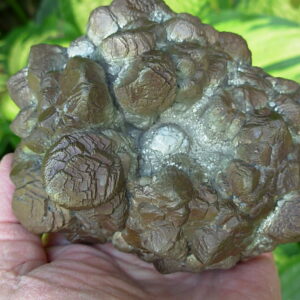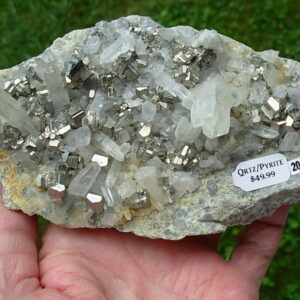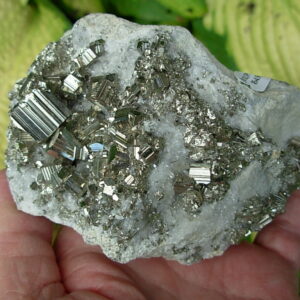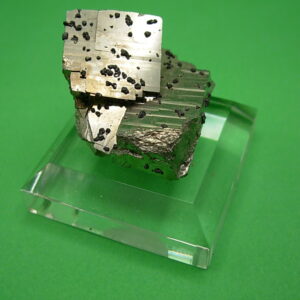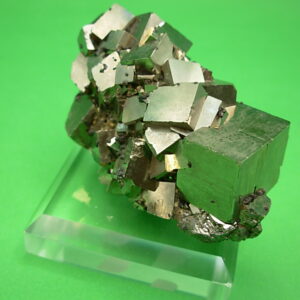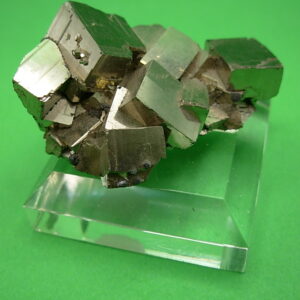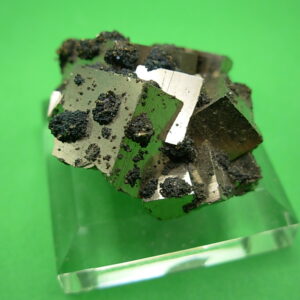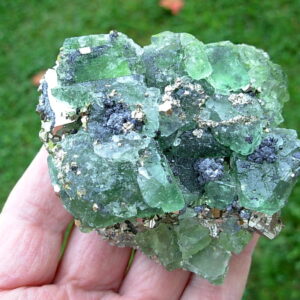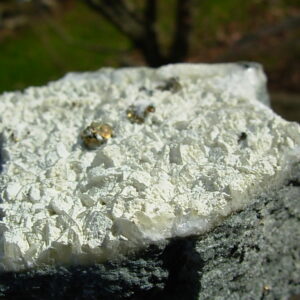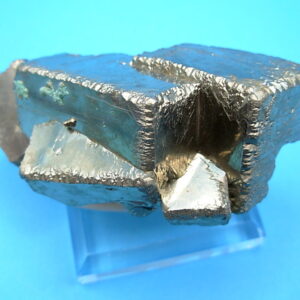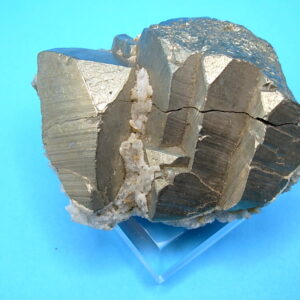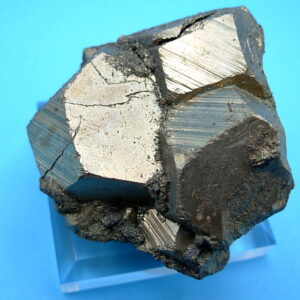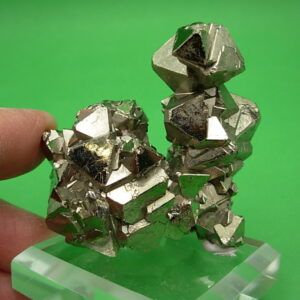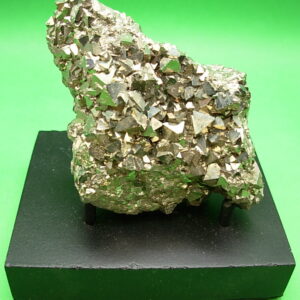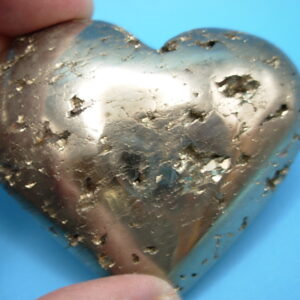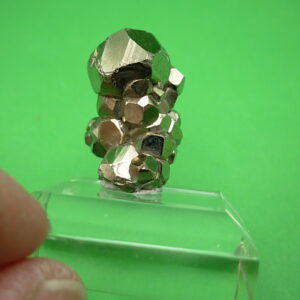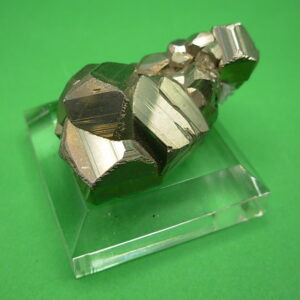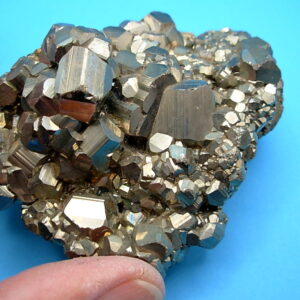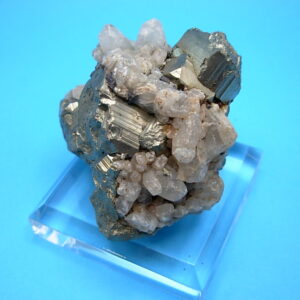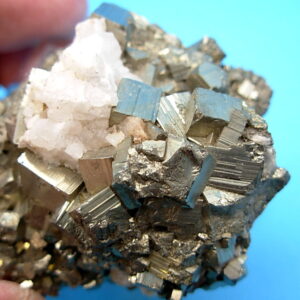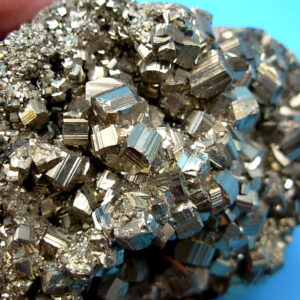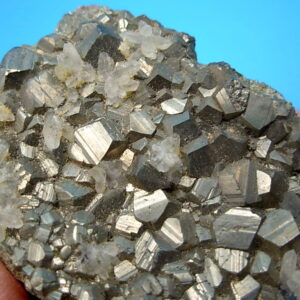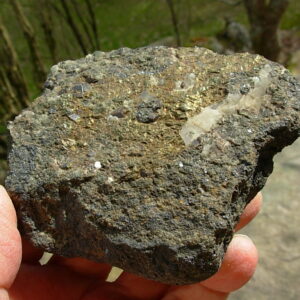Pyrite (Iron Pyrite)
Pyrite
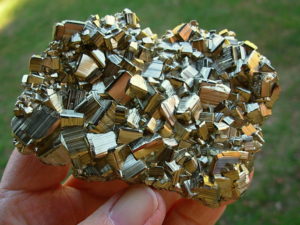
Unlike gold, which is prized because of its color, brightness, workability, and rareness, Pyrite is not a metal, but rather, a sulfide made up of about 46% iron and 54% sulfur (and may have various other minor impurities). Pyrite is much harder and more brittle, and it tarnishes to a dark brown. Fool's Gold is very common, and this has led to many people thinking they had discovered real gold over the years. Pyrite forms when hydrogen sulfide combines with iron. These common elements often fuse and are carried by heated fluids to cracks in native rocks where pyrite is deposited. It is attractive, and many museums keep specimens of Pyrite for display or educational purposes.
Bravoite is the name given to a nickel-rich iron sulfide. It is closely related to pyrite but contains up to 20% nickel. Some mineral books treat it as a variety of pyrite. Pyrite is a polymorph of Marcasite, which means that it has the same chemistry, FeS2, as Marcasite; but a different structure and therefore different symmetry and crystal shapes. Pyrite is difficult to distinguish from Marcasite when a lack of clear indicators exists.
Common Shapes of Pyrite
Pyrite comes in many different shapes and forms. Most Pyrite that is mined consists of masses containing small crystals ranging from grains of sand size to a few mm and comprises about 70% of what is mined. This 70 percent is not considered to be collectible quality. The remaining 30% or so ranges from low grade collectible to good grade collectibles. There are very few fine grade minerals found in pyrite mines and they are usually found in small pockets.
Pyrite is found inclusive in many other minerals such as Serpentine, Rhodonite, Black Jade, Basalt, Quartz, Amethyst and Lapis Lazuli just to name a few. It is also found as Pyrite Suns from Sparta, Illinois. Pure Pyrite crystallization with no matrix featuring radiating golden crystals that sparkle in the light. These are also known as Pyrite Dollars and Sun Dollars. Collected in a coal mine hundreds of feet below the earth's surface, this sun formed over 300 million years ago! Fanned crystal structure is due to compressed growth between sheets of slate. Other forms may be like globular spheres that when split open have the same radiating outward lines as many pyrite suns.
Pyrite Crystals
Pyrite crystals are natural formations that occur in Geometric shapes. Their are three main shapes of pyrite crystals.
- Cube
- Pyritohedron
- Octahedron
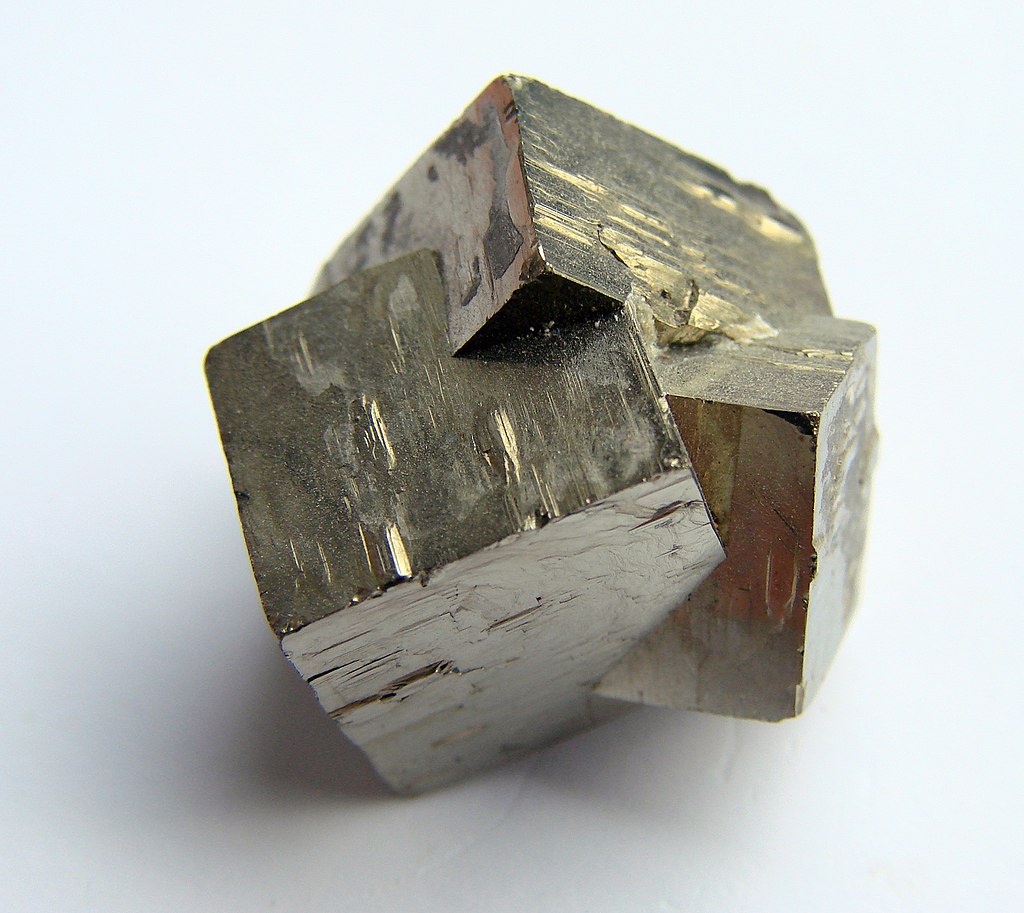
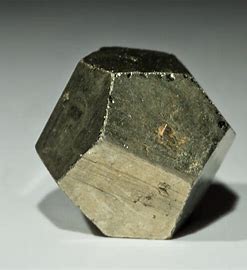
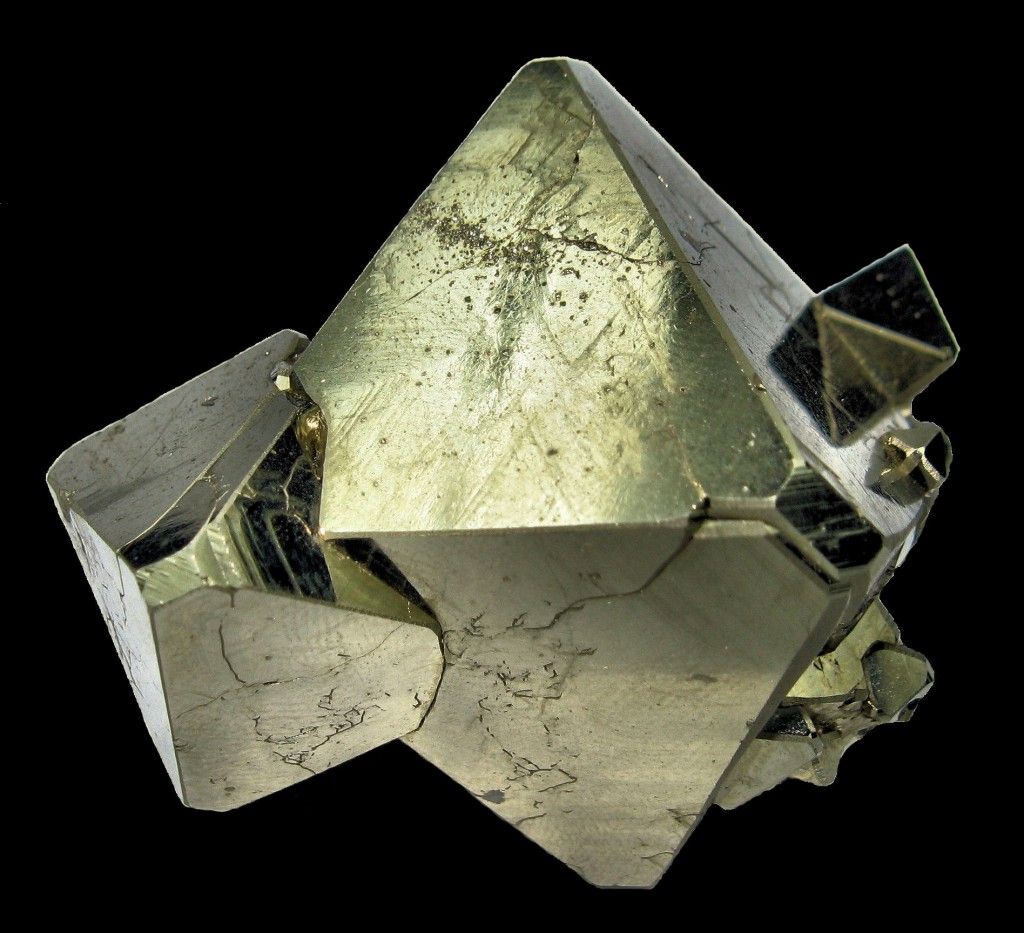
Cube Pyrite These are the most common forms of pyrite crystals. They may look like squares but they are more correctly called Cuboids. (They are actually 3D rectangles. The term “3D rectangle” isn’t often used in formal geometric contexts, but it’s typically understood to mean a rectangular prism or cuboid.) These may look to be square, but if you measure the sides you will find they are actually rectangular.
Pyritohedral Pyrite These are less common than the cuboids. These crystals look like a sphere with many flat sides. These are sometimes referred to as dodecohedral pyrite specimens.
Octahedral Pyrite These are the rarest crystal forms of pyrite crystals. They look like two pyramids with their bases joined together.
When viewing the many specimens of pyrite you will soon realize that there are many more variations to the shapes of pyrite crystals. When there are multiple crystals on a specimen it is called a crystal cluster. You will find that as these pyrite crystals form, sometimes they are not sure exactly what shape they will become. Some merge shapes in a process called intermediary combinations. This occurs when two or more shapes may be formed together, such as octahedral and cube or cube and pyritohedral or any other combination. These specimens are called complex combinations or complex alterations. In Peru 26 different intermediary shapes have been identified.
Below are photos of a few of the many variations of Pyrite
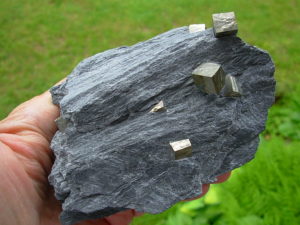
Pyrite Cubes in Phyllite
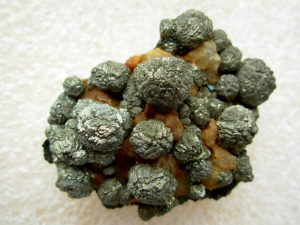
Globular Pyrite on Barite
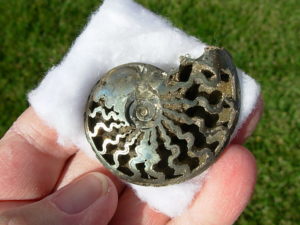
Pyrite Replacement Ammonite
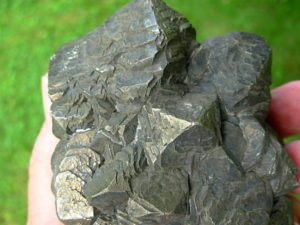
Complex alteration of Pyritohedron
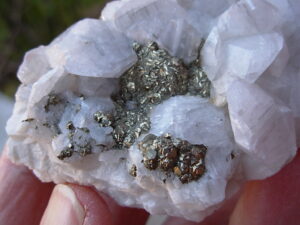
Cube Pyrite and Sphalerite in Quartz
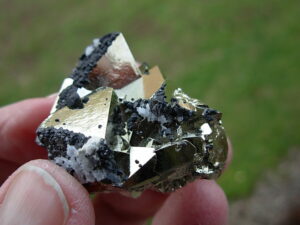
Octahedral Pyrite Sphalerite and Quartz
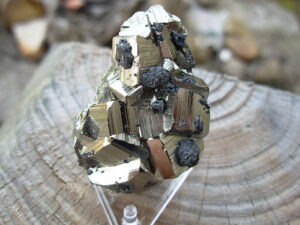
Striated Cube Pyrite with Sphalerite
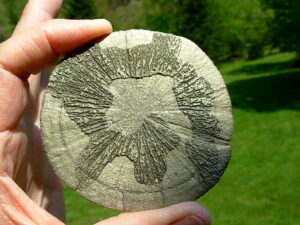
Pyrite Sun
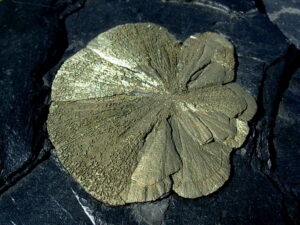
Pyrite Sun in Slate
The bottom of many specimens have what is called a "breakaway surface" (or break surface). This surface is where the specimen was originally connected to its main matrix. If a specimen was recently broken off or even naturally fell off the pyrite will have very little luster and appear dull looking. If, on the other hand the specimen fell off naturally and layed there for a long period of time the pyrite begins to recrystallize anf the area becomes very shiney. Many Times jewelers use these recrystallized areas for making jewelry pieces.
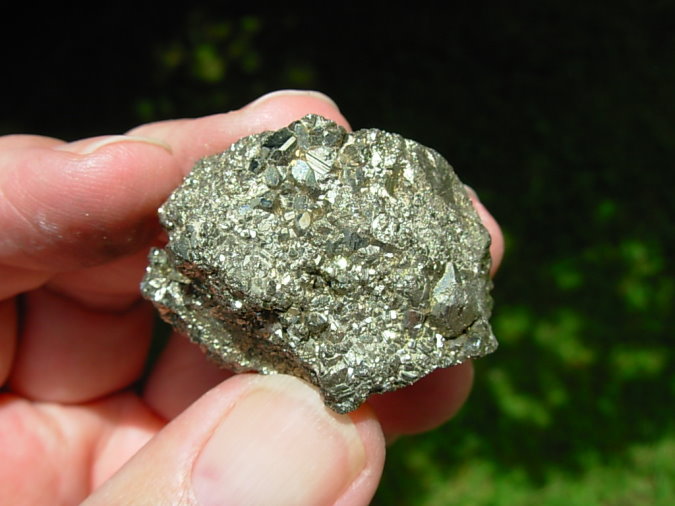
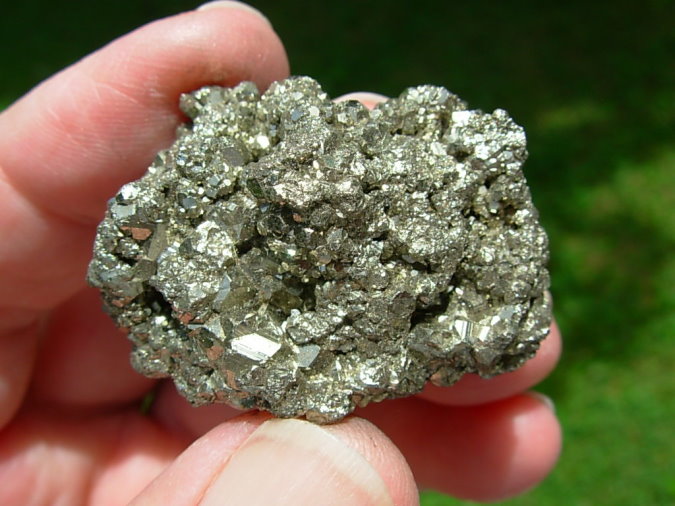
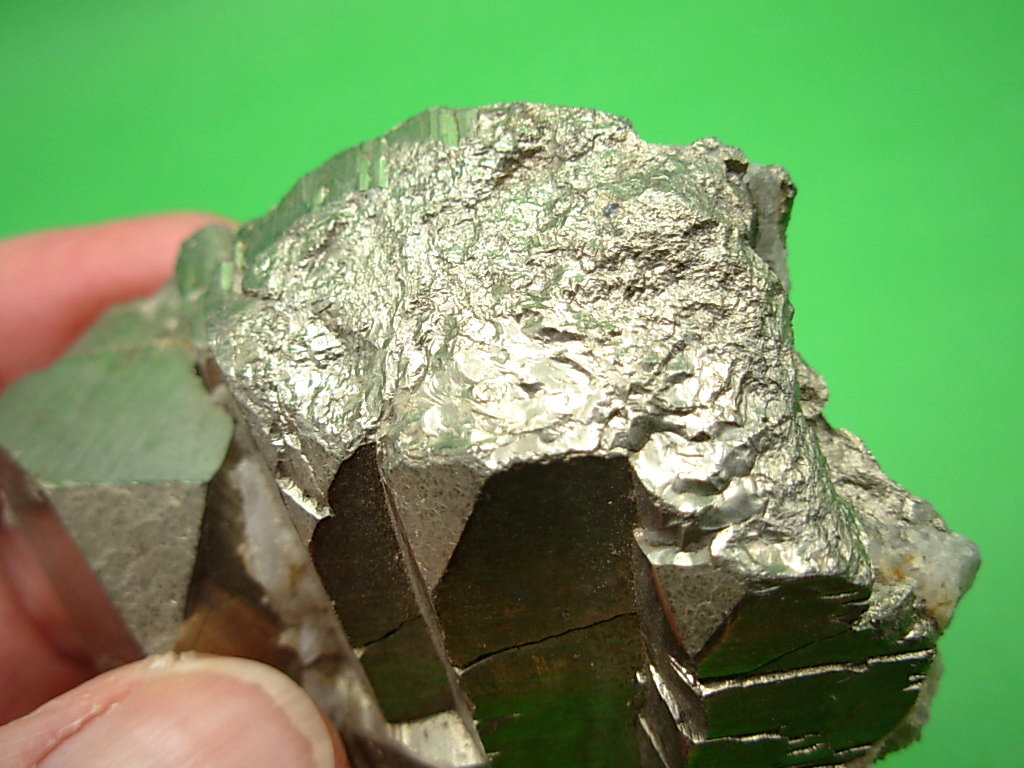
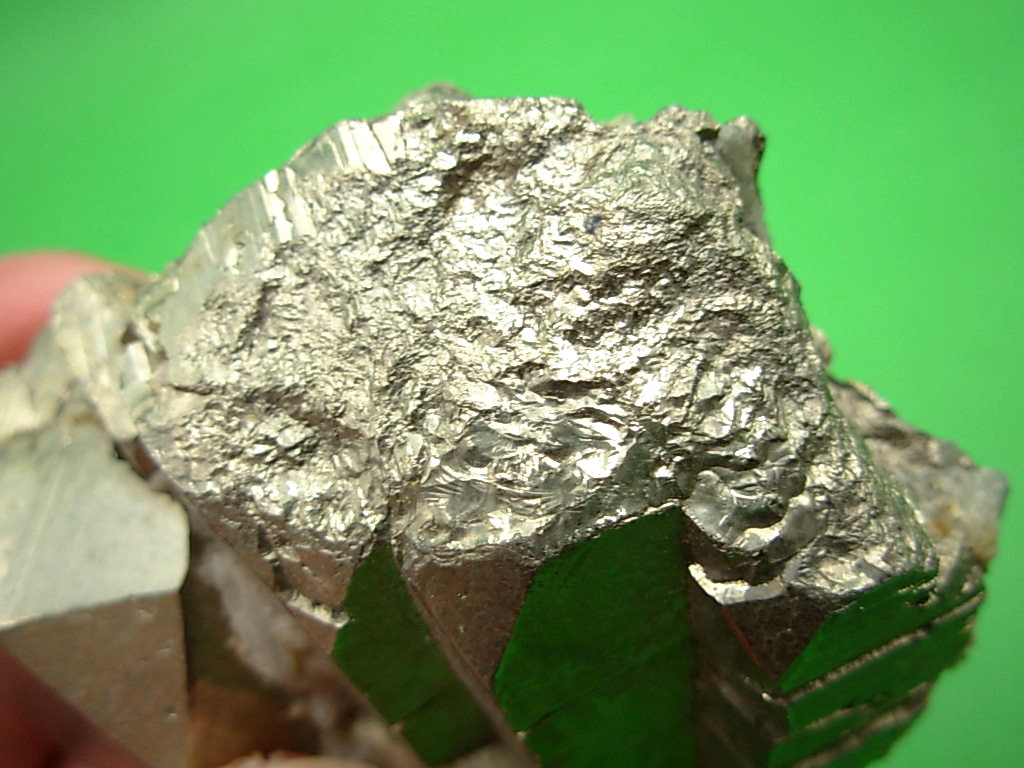
In some specimens you may find depressions in the surfaces of the pyrite crystals. These areas are created when some of the pyrite is disolved during the crystal growth and formation. The areas may become disolved due to chemical and mineral inter-actions or with temperature variations. These etchings may occur on face surfaces or on edges. They are distinctly different than striations, which appear to be more uniform and structured. Below are a few photos of etchings.
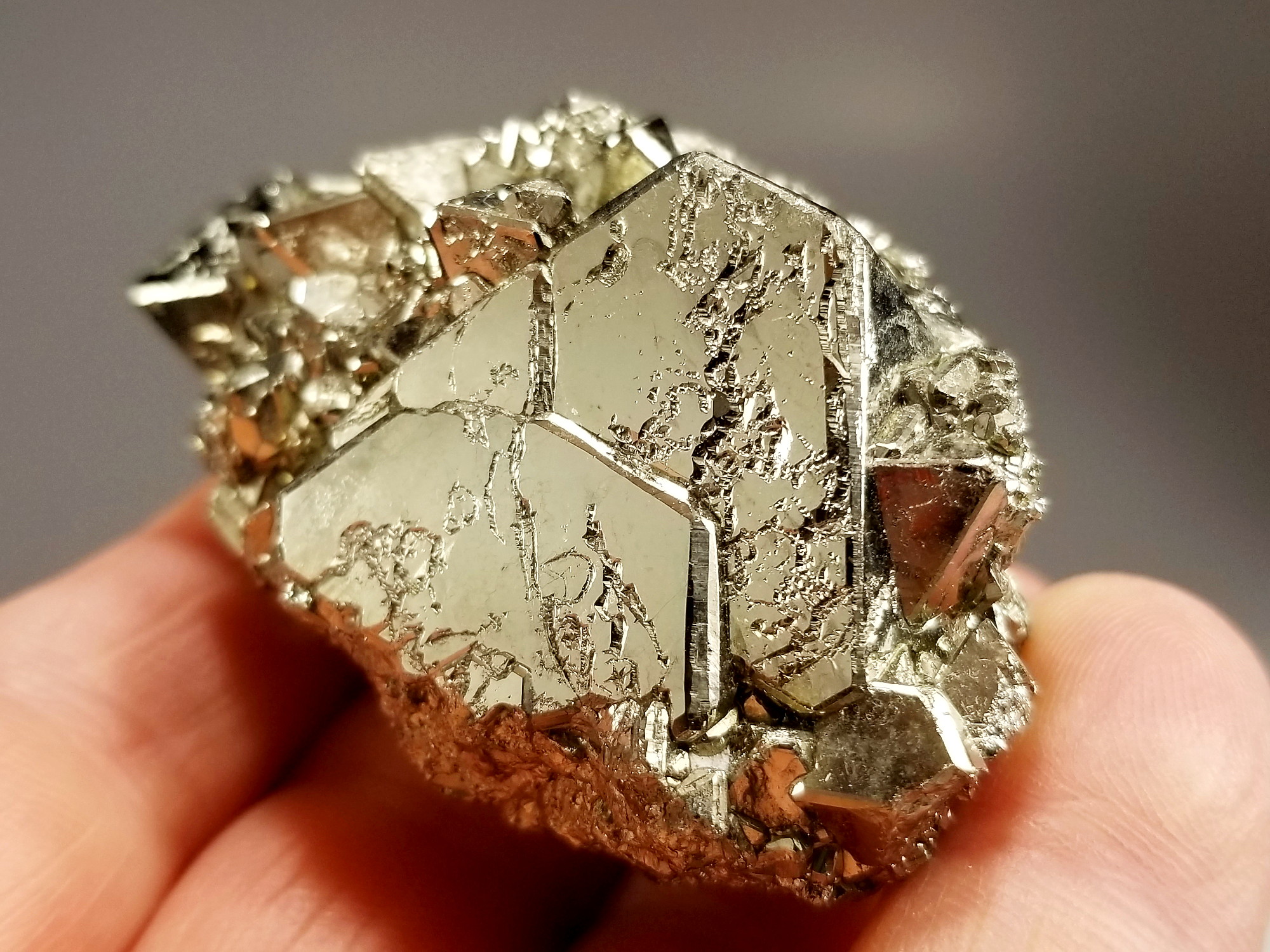
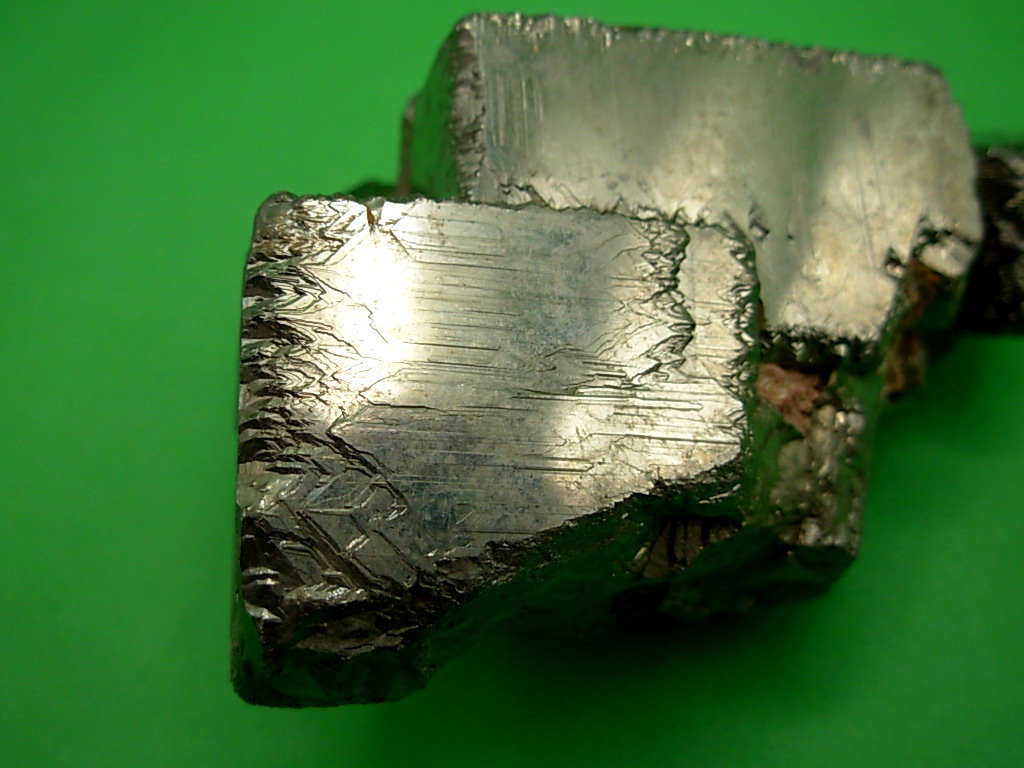
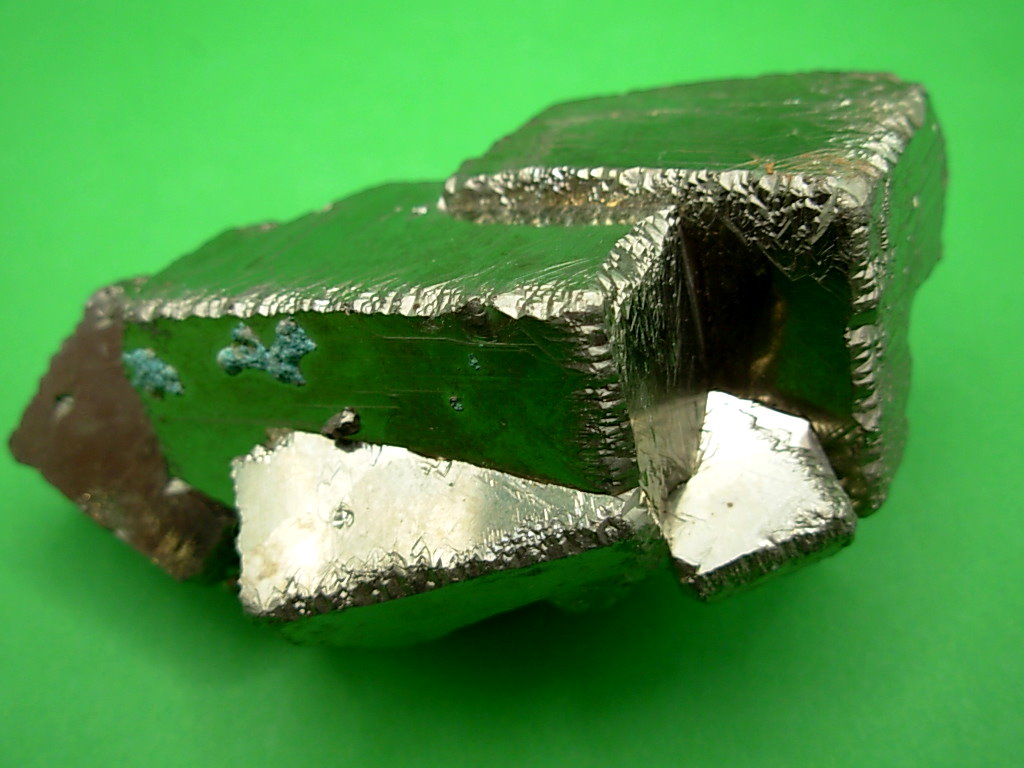
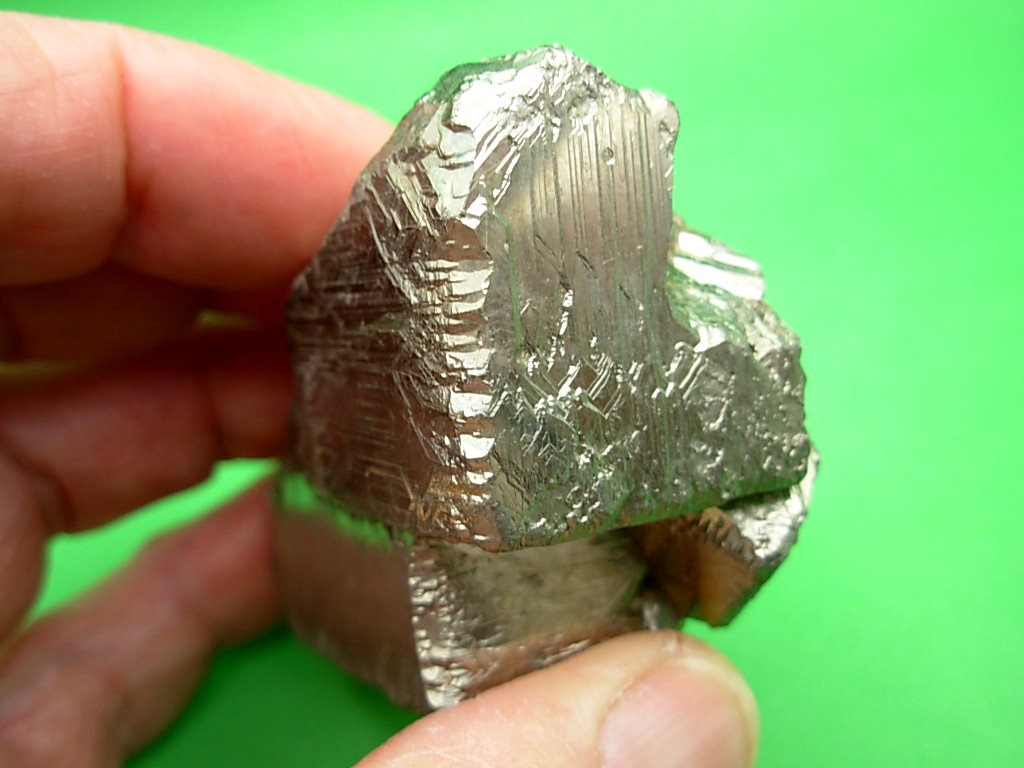
Pyrite Specimens from Huanzala Peru
Huanzala is a lead-zinc mine operated by Cia. Minera Santa Luisa and owned by Mitsui Mining & Smelting Co. (Japan). The mine is world famous for excellent pyrite and fluorite specimens. According to well-known mineral specimen importer Rock Currier, the Huanzala mine probably holds the world record with regard to the total tonnage of mineral specimens produced by a single mine. Furthermore according to Mardani Fine Minerals.... “Huanzala has been praised as one of the greatest pyrite localities of all time.”
Rock H. Currier is a legendary mineral collector. He founded an American company known throughout the mineral-collecting world as Jewel Tunnel Imports (JTI). In 1972 he began a new career turning his efforts to building a very successful venture by becoming a mineral dealer and establishing Jewel Tunnel Imports (JTI). His larger-than-life personality and extraordinary collection of minerals from around the world became his legacy. Currier traveled the globe to acquire unique mineral specimens for his personal collection as well as for stocking Jewel Tunnel Imports with some of the finest specimens available. His collection areas included exotic locales such as Africa, India, Peru, Brazil, Chile, Russia, and China. He helped develop the worldwide mineral trade that exists today. Rock Currier was also a major contributor to Mindat.org. Sadly he passed away in 2015. He was a large burly man who often was seen in his large fur coat. He contributed a lot to the mineral collecting world and we thank him greatly for his lifes work.
We were able to find a few boxes of pyrite specimens from Peru and Brazil that were from the Jewel Tunnel Imports company from a 1970's and 1980's collection. There were cards from the Jewel Tunnel Imports in these boxes, but most of the mineral identification cards sadly were destroyed beyond recovery. We did however recover several of these specimen cards as shown here in the photos. We are however unable to determine which card went with witch mineral. The specimens below came from that group of Pyrite we found in our never ending search for minerals.
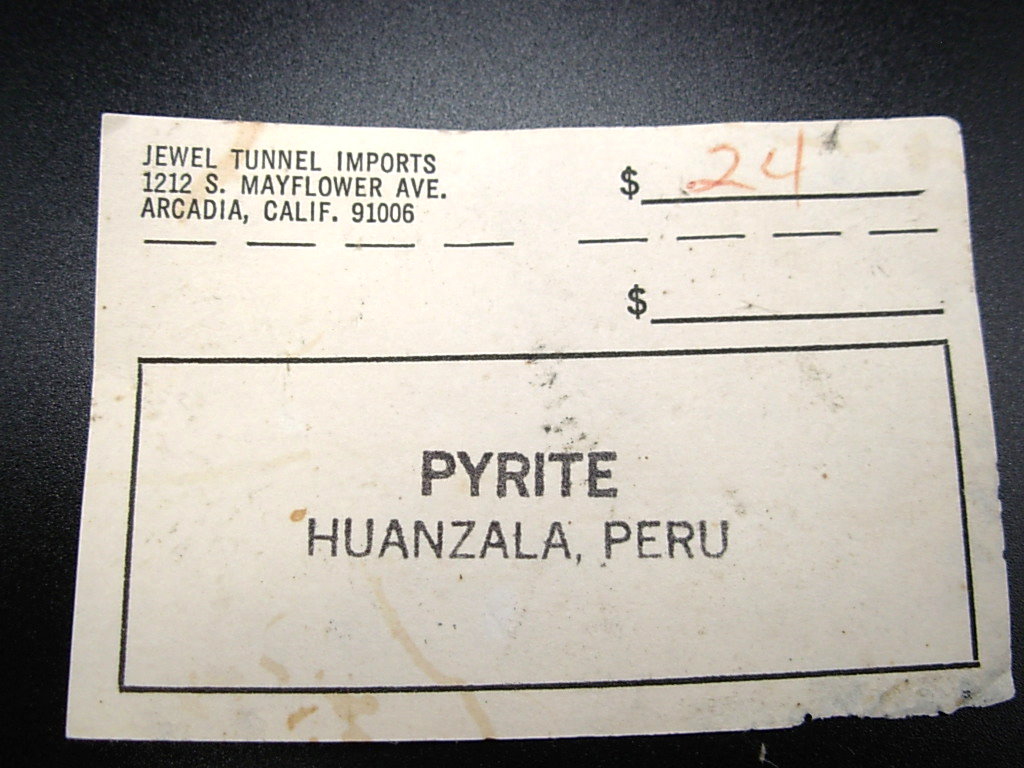
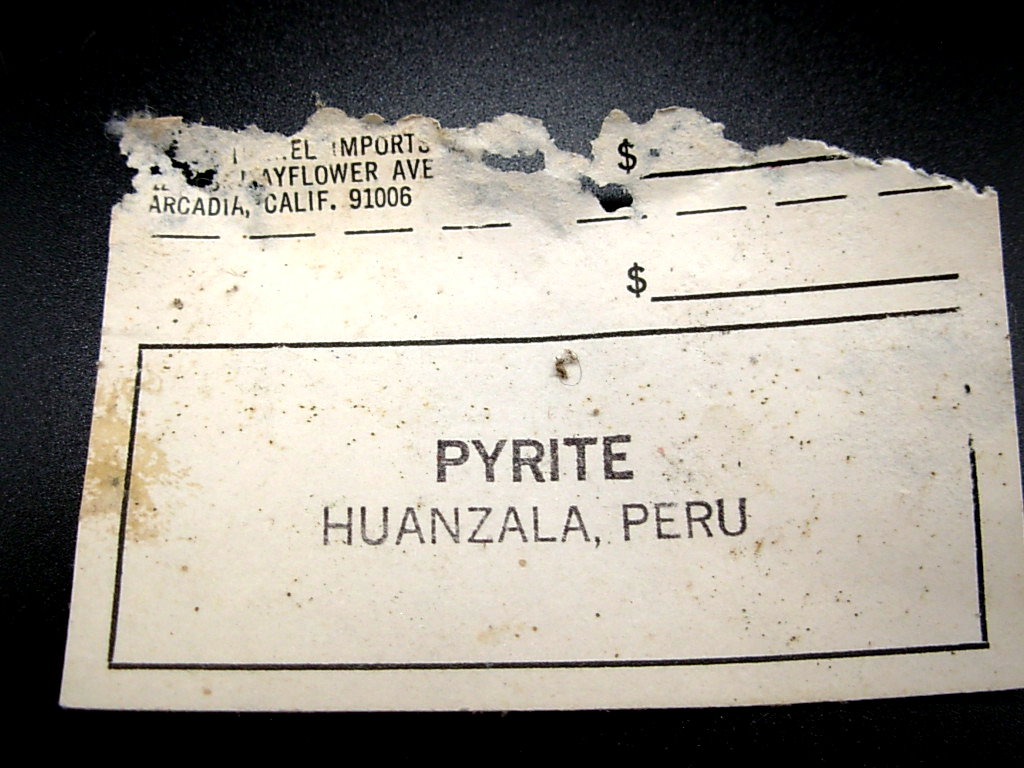
Pyrite Specimens Currently For Sale
-
A Very Rare Pyrite Specimen from Tea Cove Newfoundland
$369.00 Read more -
Beautiful and Rare Pyrite and Quartz Crystals on Matrix 20
$49.99 Add to cart -
Beautiful and Rare Pyrite and Quartz Crystals on Matrix 21
$54.99 Add to cart -
Cube Pyrite Cluster with black Sphalerite (var. Marmatite) from Huanzala Mine, Peru 3
$49.00 Add to cart -
Cube Pyrite Cluster with minor black Sphalerite (var. Marmatite) from Huanzala Mine, Peru 4
$169.00 Add to cart -
Cube Pyrite Cluster with minor black Sphalerite (var. Marmatite) from Huanzala Mine, Peru 6
$125.00 Add to cart -
Cube Pyrite Cluster with nice black Sphalerite (var. Marmatite) from Huanzala Mine, Peru 8
$225.00 Add to cart -
Green Fluorite on Pyrite from Peru 18
$269.00 Add to cart -
Intergrown Pyrite cubes on Magnesite XLs from Hunting Hill Quarry, Rockville, MD10
$49.00 Add to cart -
Large Cube Pyrite Crystals with Etched Edges and Faces with Minor Smithsonite from Ancash Peru 15
$495.00 Add to cart -
Large Cube Pyrite Crystals with Triangular Corners with Secondary Quartz from Ancash Peru 12
$82.00 Add to cart -
Large Dodecohedral Crystals with Striations and Black Sphalerite (var. Marmatite) Influence from Ancash Peru 16
$115.00 Add to cart -
Octahedral Pyrite Cluster from Huanzala Mine, Peru 1
$179.00 Add to cart -
Octahedral Pyrite Two Sided Display from the Huanzala Mine, Peru 5
$89.00 Add to cart -
Pyrite Carved Heart from Huanzala Mine, Peru
$119.00 Add to cart -
Pyritohedral Pyrite Cluster from Huanzala Mine, Peru 2
$69.00 Add to cart -
Pyritohedral Pyrite Cluster from the Huanzala Mine, Peru 7
$94.00 Add to cart -
Pyritohedron Complex Pyrite Cluster fron Ancash, Peru 18
$159.00 Add to cart -
Striated Complex Pyrite Crystals with Calcite from Ancash Peru 11
$79.00 Add to cart -
Striated Cube Cluster with Secondary Calcite from Ancash Peru 17
$79.00 Add to cart -
Striated High Sparkle Pyrite Crystal Cluster from Ancash Peru 14
$79.00 Add to cart -
Striated Pyritohedron Pyrite Crystals with Small Quartz Crystals from Ancash Peru 13
$39.00 Add to cart -
Very Rare Pyrite, Chalcopyrite, Garnet, Epidote and Calcite piece from Mina Vieja De Payande 9
$119.00 Add to cart

